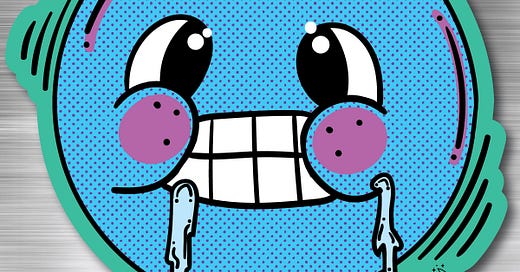Everything Sucks Club: A Lesson On Pop Art
Drive further into the inspiration for January's designs.
Pop Art Origins - Mid 1950’s to 1969
Pop Art was an artist’s response to consumerism, popular culture, products, imagery, media, and politics of the time.
Whether you know about different art styles or not, I guarantee you know what Pop Art looks like and for many folks you may have lived through the main movement. Pop Art started in the mid-1950’s, altho…
Keep reading with a 7-day free trial
Subscribe to Tiny Werewolves to keep reading this post and get 7 days of free access to the full post archives.




